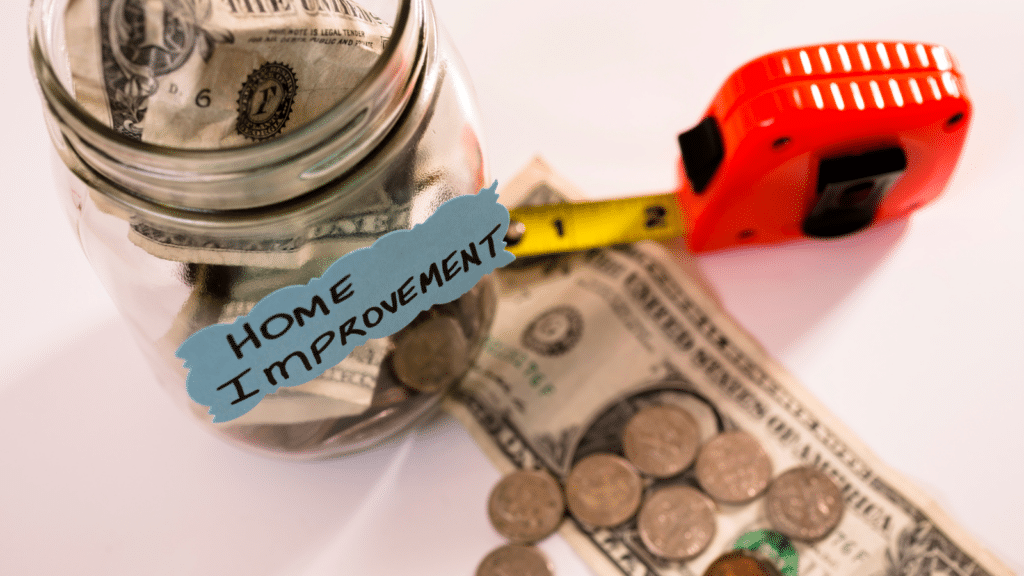Spring may feel many frosty months away, but with the busyness of the fall season followed by holiday festivities, the months can slip right by almost unnoticed. When this happens, you may find it’s too late for budgeting home improvement projects. You may find yourself scrambling to put together the funds at the last minute or find yourself tempted to sign up for a financing option that will leave you paying far more over the long run.
We’ve seen the savviest of our HomeWise customers follow a few simple planning steps for their budgets, and they never seem to be caught off-guard by remodeling or repair projects. The great news about these tips is their universal applicability. Yes, they will help you get that home improvement project done, but you’ll find continuing these practices will stretch your resources farther and enable your family to do more with what you have.
Before Budgeting Home Improvement
No one recovers quickly from sticker shock, and there’s no more gut-churning feeling than receiving a bill for services only to find that you are now expected to pay almost twice what you had planned. The very first step is to find out what you are in for.
1. Conduct Research
Learn about the materials and labor costs for the project you want to do. If you have options, such as the types of roof shingles or the type of decking material you’ll use, compare various brands and their prices.
2. Prioritize Your Remodeling List
Do the number of projects you want for your home seem overwhelming? Prioritize them first in order of urgency; repairing water-damaged wood along your eaves is far more important than adding garden lighting. Once you’ve addressed the urgent, your next priority can simply be preference or convenience.
3. Meet with Contractors
Ask around among friends and colleagues for the best contractors to work with and read reviews of their businesses. Then schedule appointments to show them the project and get their estimates. Ask all your questions.
When will the contractor be available?
Who will be working with him?
What are anticipated labor costs?
How does he handle needing additional materials or time to complete the job?
When you feel confident about the contractor you want to hire, ask if you can go ahead and get your project scheduled for that soon-to-arrive springtime date.
4. Make Goals for Saving
With a plan for the project, a contractor, a timeline, and a cost-estimate in place, it’s time for budgeting home improvement. Look at what you already have set aside and contrast that with what you need to fund your project. Divide the amount needed by the number of months between now and your anticipated start date. Now it’s time to make a saving plan!

Ways to Save
If saving money could be broken down into a single bit of advice, it is “simplify your lifestyle”. So many of the habits we fall into, such as eating out frequently, buying numerous extravagant gifts, and holding on to memberships and subscriptions we don’t use, waste our resources. Try a few of these tips and diligently set aside the money you save.
1. Eat at home when possible and pack lunch for work.
2. Use your home as the hub of your social life instead of going out.
3. Make celebrations less about buying and giving “stuff” and more about making memories.
4. Set aside a specific account for home improvement projects.
5. Deposit funds into your savings account as soon as you earn them. Don’t wait until the end of the month, only to find out you’ve exhausted your funds on other things.
6. Make purchases based on needs, not wants.
7. Cancel unused and underutilized services and memberships.
8. Find local free and low-cost activities and events to attend.
9. Consult your partner and wait at least 24 hours to consider the wisdom of the spending before making a large purchase.
10. Track the money you spend each month. Look for places where your budget is out of alignment and make adjustments.
Loan Options
If you find yourself in the predicament of needing to tackle a beyond-your-current-resources project but it cannot wait, there are options for financing your project with your home.
Cash Out Refinance
A cash out refinance, as the name implies, results in you getting a new and higher mortgage on your remaining home balance, with a lump sum of cash handed to you at closing, which enables you to fund that project. You’ll pay the loan back incrementally as you pay your mortgage every month.
Home Equity Loan
A home equity loan is backed by the value you have in your home. It is a lump-sum loan that will typically have a fixed interest rate. These loans can come with fees, so ask about any and all hidden costs before committing to a specific lender.
Home Equity Line of Credit
The Home Equity Line of Credit may be your best option, as you are essentially given a checkbook and a spending limit. You can write checks as needed throughout the course of the project. If you choose this option, be very careful not to delay or miss payments, as the interest charges can really add up.
Word to the Wise
Budgeting home improvement projects is smart, but sometimes even the best-laid plans come with surprises. Under that siding you’re planning to replace could lurk an undetected leak or faulty electrical wiring. Fixing problems of that nature is non-negotiable. Therefore, finance experts recommend that as you prepare for your projects, you also set aside an extra 15-20% above the projected costs for any underlying issues that may arise.
When you’re making plans for your springtime home improvement projects, we hope you will give your local roofing and exterior experts at HomeWise a call. We would love to talk with you about the scope and options of your project and earn your trust and your business. Give us a call today.



